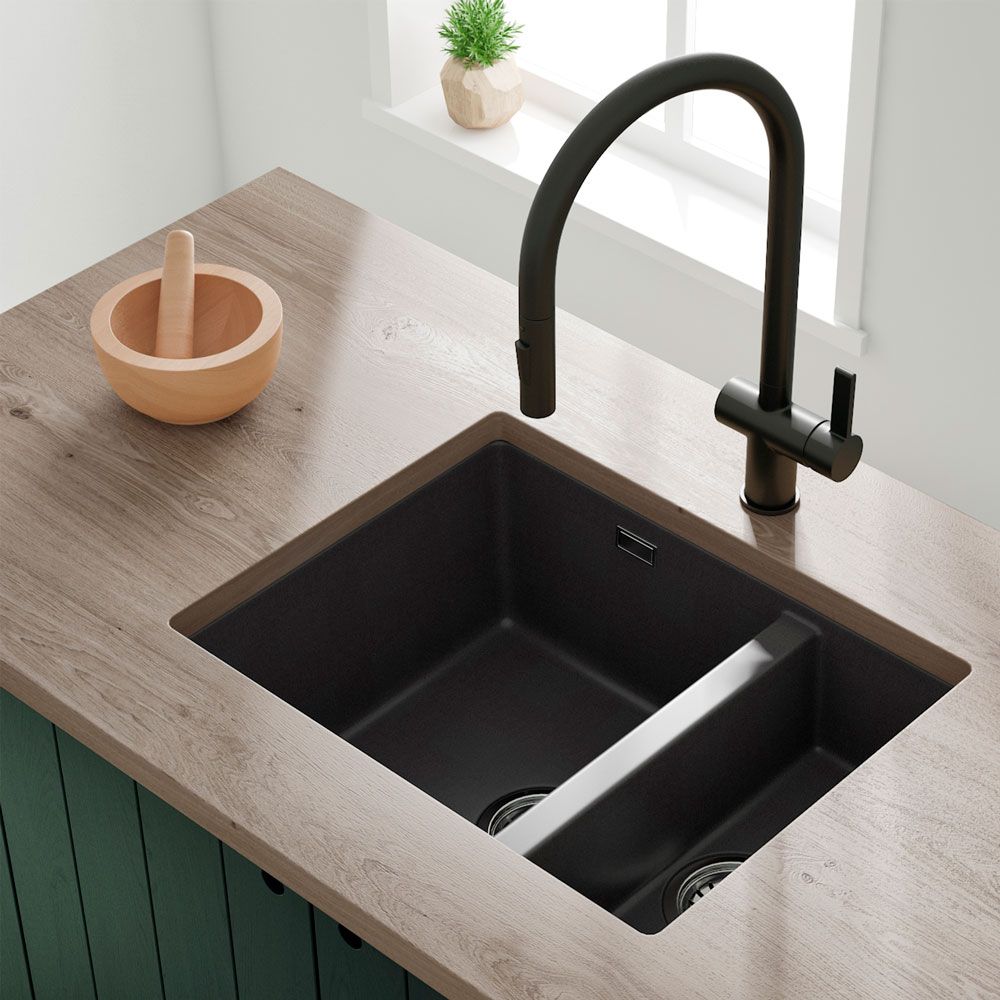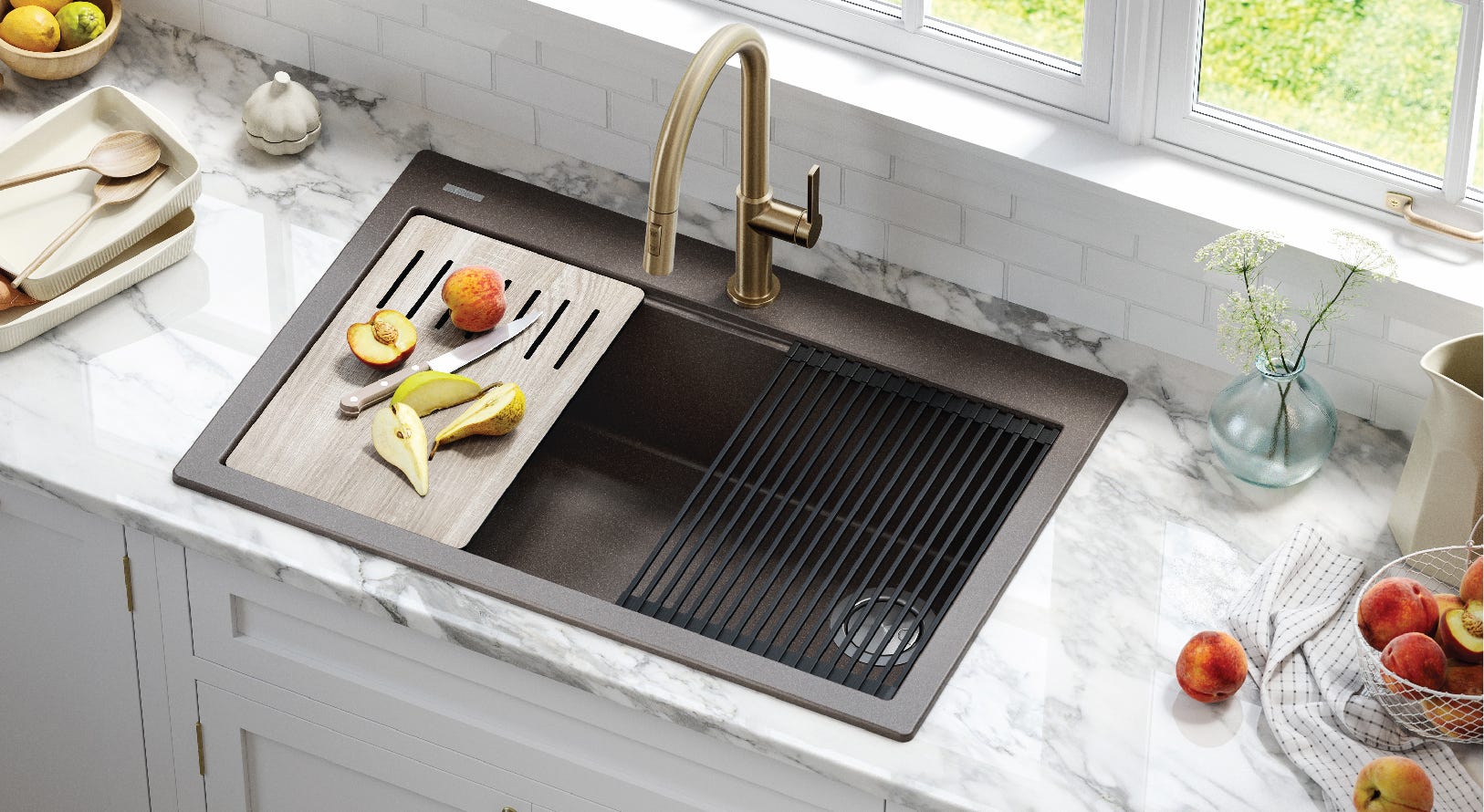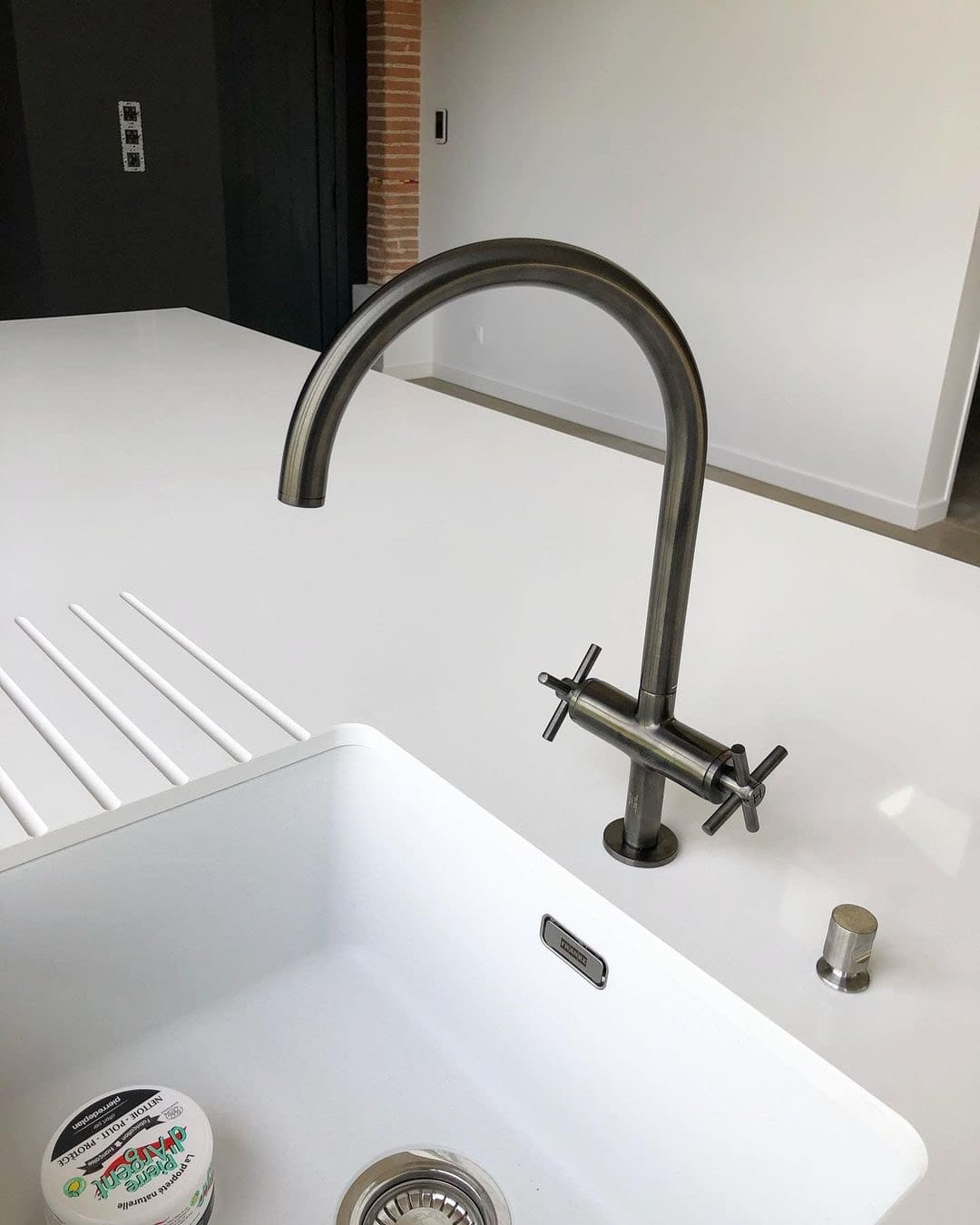Granite sinks are not only functional but also add a touch of luxury and elegance to any kitchen or bathroom. However, to maintain their pristine appearance and longevity, they require proper care and maintenance. This comprehensive guide will provide you with essential tips and practices to keep your granite sink looking as good as new.
Understanding Granite Sinks
Granite sinks are revered for their durability, timeless beauty, and resistance to heat and scratches. They are typically composed of a blend of natural granite stone and acrylic resins, ensuring a robust yet aesthetically pleasing fixture. One of the key attributes of granite is its non-porous nature when properly sealed, which prevents bacteria and stains from penetrating the surface. Despite these advantages, granite sinks are not impervious to damage. Harsh chemicals, abrasive cleaners, and neglect can lead to dullness, stains, and even structural damage over time. Therefore, understanding the unique properties of granite and the specific care it requires is the first step towards maintaining a pristine basin.

Daily Cleaning Routine
A consistent daily cleaning routine is vital for keeping your granite sink in top condition. After each use, rinse the sink thoroughly with warm water to remove any food particles, soap residues, and other debris. Use a soft cloth or sponge to wipe down the basin, ensuring that no abrasive materials come in contact with the surface. For stubborn spots or residues, a mild dish soap diluted in water can be employed. Avoid using harsh chemical detergents or acidic cleaners like vinegar and lemon juice, as these can erode the sealant and damage the granite over time. Once cleaned, dry the sink with a microfiber cloth to prevent water spots and mineral deposits. This simple yet effective routine helps in maintaining the shine and integrity of the granite surface while preventing the buildup of potential stains.
Periodic Deep Cleaning
In addition to daily cleaning, periodic deep cleaning is essential to keep your granite sink free from grime and bacteria that may accumulate over time. For a thorough clean, fill the sink with warm water and add a few tablespoons of baking soda to create a mild abrasive solution. Using a soft-bristled brush, gently scrub the surface, paying special attention to corners and hard-to-reach areas. Baking soda acts as a gentle abrasive that effectively removes stains without scratching the granite. After scrubbing, drain the sink and rinse thoroughly with clean water. Avoid using steel wool or scouring pads, as they can scratch the surface and compromise the sink’s finish. For an added layer of cleanliness, consider using a granite-safe disinfectant spray to sanitize the sink. This deep cleaning process should be performed at least once a week or more frequently if your sink sees heavy use.

Sealing Your Granite Sink
Granite sinks come with a protective sealant that enhances their non-porous properties, but this sealant can wear off over time, leaving the sink vulnerable to stains and moisture penetration. To maintain the effectiveness of the sealant, it is recommended to reseal your granite sink periodically. The frequency of resealing depends on the usage and type of granite but generally, every one to two years is advisable. To check if your sink needs resealing, perform a simple water test: sprinkle a few drops of water on the surface; if the water forms beads and stays on the surface, the sealant is still intact. If the water spreads out and absorbs into the granite, it’s time to reseal. Clean and dry the sink thoroughly before applying a granite sealant, following the manufacturer’s instructions carefully. Allow the sealant to cure completely before using the sink to ensure maximum protection and longevity.
Preventing Stains and Damage
Preventing stains and damage to your granite sink involves a combination of mindful usage and prompt action. Avoid exposing your sink to prolonged contact with acidic substances like citrus juices, wine, coffee, and vinegar, as these can etch the surface and cause discoloration. When washing dishes, use a sink grid or mat to protect the bottom of the sink from heavy pots and pans that could scratch or chip the granite. Additionally, do not place hot pans directly onto the sink surface, as extreme temperature changes can cause thermal shock and potentially crack the granite. In case of spills, especially from colored liquids such as red wine or beet juice, clean them up immediately to prevent staining. Regularly inspect your sink for any signs of damage or wear and address issues promptly to prevent them from escalating.

Dealing with Stubborn Stains
Despite your best efforts, stubborn stains can occasionally mar the surface of your granite sink. For such instances, a poultice can be highly effective in drawing out deep-set stains. To make a poultice, mix baking soda with water to form a thick paste. Apply this paste directly onto the stained area and cover it with plastic wrap, securing the edges with tape. Allow the poultice to sit for 24 to 48 hours; the baking soda will help draw out the stain. After the waiting period, remove the plastic wrap and wipe away the dried paste with a damp cloth. Rinse the area thoroughly and repeat the process if necessary. For particularly stubborn stains, commercial granite stain removers are available, but ensure they are suitable for your specific type of granite. Always test any new cleaner on a small, inconspicuous area first to ensure it does not damage the surface.
Maintaining the Shine
Maintaining the natural shine of your granite sink enhances its aesthetic appeal and keeps it looking new. Besides regular cleaning, occasional polishing can help restore the luster of your sink. Use a granite polish specifically designed for stone surfaces, applying it with a soft cloth in circular motions. Polishing not only brings out the natural shine but also adds a protective layer that repels water and stains. For a more natural approach, you can use a mixture of warm water and a few drops of mild dish soap, followed by a thorough rinse and drying with a microfiber cloth. Another tip for maintaining shine is to avoid letting water stand in the sink for long periods, as mineral deposits from hard water can dull the surface. By incorporating these polishing and drying techniques into your regular maintenance routine, you can keep your granite sink gleaming and beautiful.

Addressing Chips and Cracks
While granite sinks are highly durable, they are not immune to chips and cracks, which can result from heavy impacts or improper use. Addressing these issues promptly is crucial to prevent further damage. For minor chips, a granite repair kit, which typically includes epoxy resin and color-matching compounds, can be used to fill the chip and blend it with the surrounding surface. Follow the instructions provided with the kit, ensuring the area is clean and dry before application. For larger cracks or damage, it is advisable to seek professional assistance to ensure a seamless repair that matches the original finish. Preventing such damage involves being cautious with heavy or sharp objects near the sink and using protective measures like sink mats and grids. Regularly inspecting your sink and addressing any chips or cracks immediately will help maintain its structural integrity and appearance.
Eco-Friendly Cleaning Alternatives
For those who prefer eco-friendly cleaning methods, there are several natural alternatives that can effectively clean and maintain your granite sink without the use of harsh chemicals. A mixture of warm water and mild dish soap is a simple yet powerful solution for everyday cleaning. For tougher stains, a paste made from baking soda and water can be used as a gentle abrasive. White vinegar, while too acidic for direct use on granite, can be diluted with water and combined with a few drops of essential oil for a pleasant-smelling, environmentally friendly cleaner. Another option is using hydrogen peroxide for disinfecting and whitening purposes, but always test it on a small area first to ensure it does not affect the granite’s color. These eco-friendly alternatives not only protect the granite but also contribute to a healthier living environment by reducing chemical exposure.

Professional Maintenance and Care
Even with diligent home care, professional maintenance can be beneficial for keeping your granite sink in optimal condition. Professional services can provide deep cleaning, sealing, and polishing that go beyond regular home maintenance. They have access to industrial-grade products and equipment that can effectively remove tough stains, restore shine, and apply high-quality sealants. Additionally, professionals can assess the overall condition of your sink and address any underlying issues that may not be apparent to the untrained eye. Scheduling professional maintenance once or twice a year can ensure that your granite sink remains in pristine condition and extends its lifespan. When choosing a professional service, look for reputable companies with experience in granite care to ensure your sink receives the best possible treatment.
Conclusion
Caring for a granite sink involves a combination of regular cleaning, preventive measures, and occasional deep maintenance. By understanding the unique properties of granite and following the tips outlined in this guide, you can keep your sink looking pristine and extend its lifespan. From daily routines to addressing stubborn stains and chips, each step plays a crucial role in maintaining the beauty and functionality of your granite sink. Whether you choose to incorporate eco-friendly cleaning methods or seek professional assistance, the key is consistency and attentiveness. With proper care, your granite sink will continue to be a stunning and durable centerpiece in your home for years to come.


